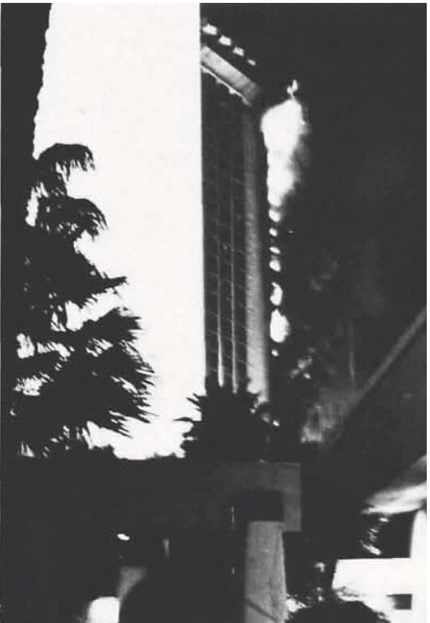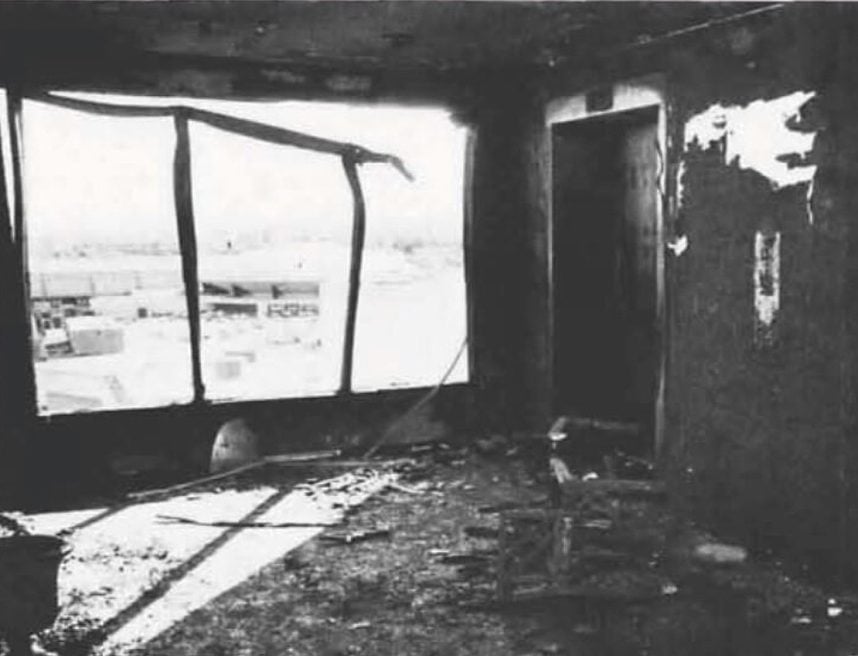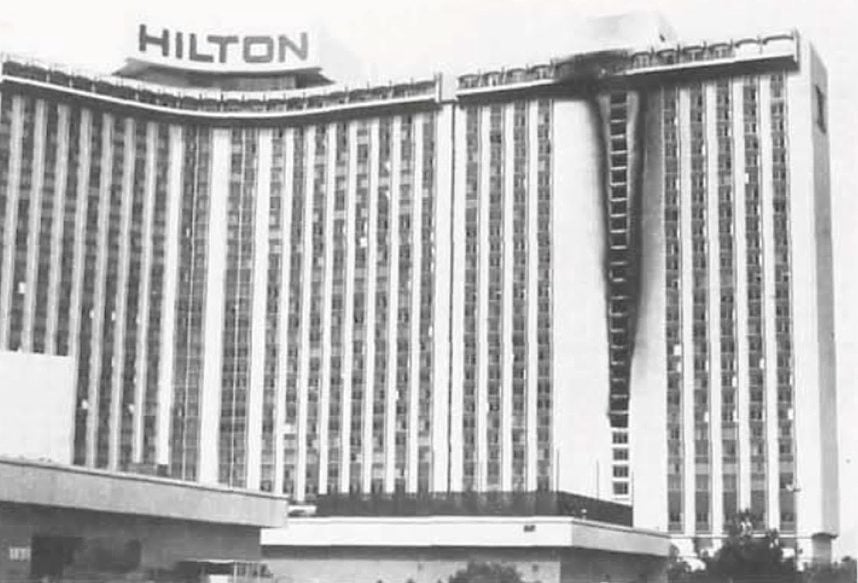
Las Vegas High-Rise Fire Safety Codes: The Truth Behind the MGM Grand Fire Myth
The deadly MGM Grand fire of 1980 wasn't solely responsible for Las Vegas's modern fire safety standards. While it prompted initial safety recommendations, the casino industry successfully lobbied against implementing them in existing buildings.
It took a second tragic fire at the Las Vegas Hilton in 1981, killing 8 people, to finally drive meaningful change. This event occurred just 12 weeks after the MGM Grand disaster.

MGM Grand Las Vegas historic fire
The Hilton fire began when Philip Cline, a 23-year-old busboy, deliberately set fire to an eighth-floor elevator lobby. The flames rapidly spread through the elevator shaft, reaching from the 8th to the 30th floor within 20 minutes.

Hilton hotel fire with palm trees
The fire killed 8 people, mainly from smoke inhalation, and injured about 300 others, including 48 firefighters. The toxic smoke was particularly lethal, though some guests survived by remembering lessons from MGM Grand coverage - breathing through wet towels.

Hilton Hotel fire rescue operation
Police quickly identified Cline as the perpetrator after discovering he was present during three previous minor fires in the same tower. Despite initially presenting himself as a hero, Cline was arrested and convicted on eight counts of murder and one count of arson.

Burned Hilton hotel room interior
This second tragedy finally forced the passage of Senate Bill 214 on March 6, 1981, implementing comprehensive fire safety measures including sprinkler systems in all existing high-rise hotels. Since these reforms, Las Vegas hasn't lost any lives to high-rise hotel fires.

Hilton hotel with illuminated exterior signage
Today, Cline continues serving eight consecutive life sentences without parole at the Southern Nevada Correctional Center.
Related Articles

WILD BUT TRUE: The Craziest Vegas Stories That Actually Happened

